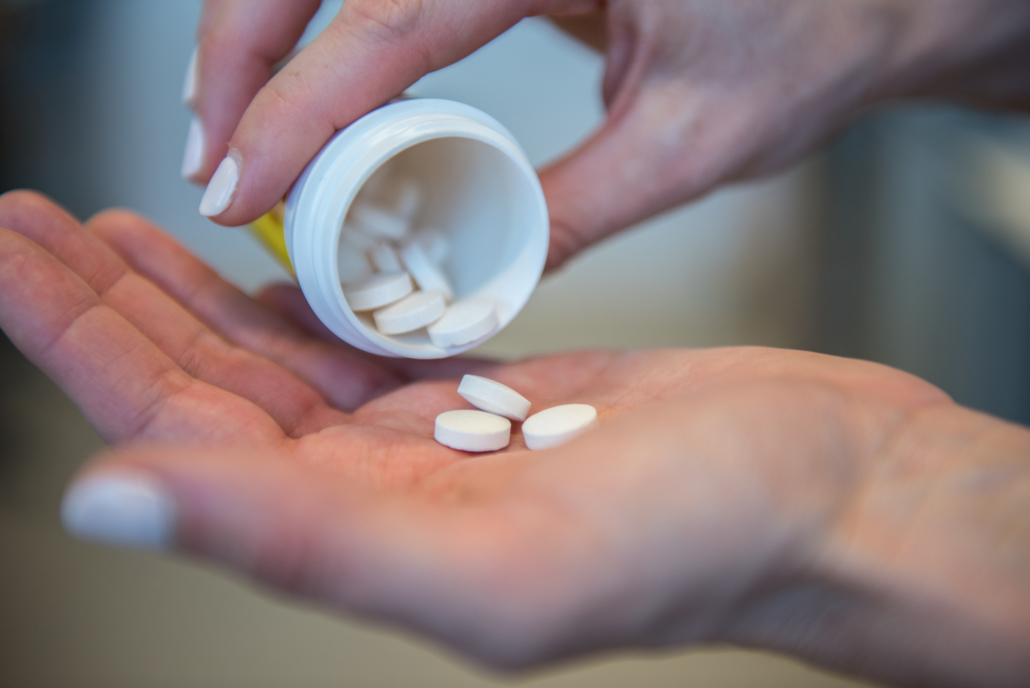Probiotics vs. prebiotics: Which to choose? And when?
By Dr. Karen Scott, PhD, Rowett Institute, University of Aberdeen, Scotland
As consumers we are constantly bombarded with information on what we should eat to improve our health. Yet the information changes so fast that it sometimes seems that what was good for us last week should now be avoided at all costs!
Probiotics and prebiotics are not exempt from such confusing recommendations, and one area lacking clarity for many is which of them we should pick, and when. In this blog I will consider the relative merits of probiotics and prebiotics for the gut environment and health.
By definition, both probiotics and prebiotics should ‘confer a health benefit on the host’. Since an improvement in health can be either subjective (simply feeling better) or measurable (e.g. a lowering in blood pressure) it is clear that there is not a single way to define a ‘health benefit’. This was discussed nicely in a previous blog by Prof Colin Hill.
Although consumption of both probiotics and prebiotics should provide a health benefit, this does not mean that both need to act through the gut microbiota. Prebiotics definitively need to be selectively utilised by host microorganisms – they are food for our existing microbiota. However, depending on the site of action, this need not be the gut microbiota, and prebiotics targeting other microbial ecosystems in or on the body are being developed. Traditionally prebiotics have specifically been used to boost numbers of gut bacteria such as Bifidobacterium and the Lactobacilliaceae family, but new prebiotics targeting different members of the gut microbiota are also currently being researched.
Probiotics are live bacteria and despite a wealth of scientific evidence that specific probiotic bacterial strains confer specific health benefits, we often still do not know the exact mechanisms of action. This can make it difficult both to explain how or why they work, and to select new strains conferring similar health benefits. Many probiotics exert their effects within the gut environment, but they may or may not do this by interacting with the resident gut microbiota. For instance probiotics that reduce inflammation do so by interacting directly with cells in the mucosal immune system. Yet strains of lactobacilli (see here for what’s included in this group of bacteria) may do this by modulating cytokine production while Bifidobacterium strains induce tolerance acquisition. These very different mechanisms are one reason why mixtures containing several probiotic species or strains may in the end prove the most effective way to improve health. On the other hand, some probiotics do interact with the resident gut microbes: probiotics that act by inhibiting the growth of pathogenic bacteria clearly interact with other bacteria. Sometimes these may be potential disease-causing members of the resident microbiota, normally kept in check by other commensal microbes that themselves have become depleted due to some external impact, and some may be incoming pathogens. Such interactions can occur in the gut or elsewhere in the body.
This brings me back to the original question, and one I am frequently asked – should I take a probiotic or a prebiotic? The true and quick answer to this question is ‘it depends’! It depends why you are asking the question, and what you want to achieve. Let’s think about a few possible reasons for asking the question.
I want to improve the diversity of my microbiota. Should I take a prebiotic or a probiotic?
My first reaction was that there is an easy answer to this question – a prebiotic. Prebiotics are ‘food’ for your resident bacteria, so it follows that if you want to improve the diversity of your existing microbiota you should take a prebiotic. However, in reality this is too simplistic. Since prebiotics are selectively utilised by a few specific bacteria within the commensal microbiota to provide a health benefit, taking a prebiotic will boost the numbers of those specific bacteria. If the overall bacterial diversity is low, this may indeed improve the diversity. However, if the person asking the question already has a diverse microbiota, although taking one specific prebiotic may boost numbers of a specific bacterium, it may not change the overall diversity in a measurable way. In fact the best way to increase the overall diversity of your microbiota is to consume a diverse fibre-rich diet – in that way you are providing all sorts of different foods for the many different species of bacteria living in the gut, and this will increase the diversity of your microbiota. Of course, if you already consume a diverse fibre-rich diet your microbiota may already be very diverse, and any increased diversity may not be measurable.
I want to increase numbers of bifidobacteria in my microbiota. Should I take a prebiotic or a probiotic?
Again, I initially thought this was easy to answer – a prebiotic. There is a considerable amount of evidence that prebiotics based on fructo-oligosaccharides (FOS or inulin) boost numbers of bifidobacteria in the human gut. But this is only true as long as there are bifidobacteria present that can be targeted by consuming suitable prebiotics. Some scientific studies have shown that there are people who respond to prebiotic consumption and people who do not (categorised as responders and non-responders). This can be for two very different reasons. If an individual is devoid of all Bifidobacterium species completely, no amount of prebiotic will increase bifidobacteria numbers, so they would be a non-responder. In contrast if someone already has a large, diverse bifidobacteria population, a prebiotic may not make a meaningful impact on numbers – so they may also be a non-responder.
However, for those people who do not have any resident Bifidobacterium species, the only possible way to increase them would indeed be to consume a probiotic- specifically a probiotic containing one or several specific Bifidobacterium species. Consuming a suitable diet, or a prebiotic alongside the probiotic, may help retention of the consumed bifidobacteria, but this also depends on interactions with the host and resident microbiota.
I want to increase numbers of ‘specific bacterium x’ in my microbiota. Should I take a prebiotic or a probiotic?
The answer here overlaps with answer 2, and depends on the specific bacterium, and what products are available commercially, but the answer could be to take either, or a combination of both – i.e. a synbiotic.
If bacterium x is available as a probiotic, consuming that particular product could help. If bacterium x has been widely researched, and the specific compounds it uses for growth have been established, identifying and consuming products containing those compounds could boost numbers of bacterium x within the resident microbiota. Such research may already have identified combination products – synbiotics – that could also be available.
One caveat for the answers to questions 2 and 3 is that probiotics do not need to establish or alter the gut microbiota to have a beneficial effect on health. In fact, a healthy large intestine has a microbial population of around 1011-1012 bacterial cells per ml, or up to 1014 cells in total, while a standard pot of yogurt contains 1010 bacterial cells (108 cells/ml). Assuming every probiotic bacterial cell reaches the large intestine alive, they would be present in a ratio of 1: 10,000. This makes it difficult for them to find a specific niche to colonise, so consuming a probiotic may not “increase numbers of ‘specific bacterium x’ in my microbiota”, but this does not mean that the function of the probiotic within the gut ecosystem would not provide a health benefit. Many probiotics act without establishing in the microbiota.
I’ve been prescribed antibiotics. Should I take a prebiotic or a probiotic?
In this case the answer is clear cut – a probiotic.
There is a lot of evidence that consumption of probiotics can alleviate symptoms of, or reduce the duration of, antibiotic associated diarrhoea. From what we know about mechanisms of action, consumption of antibiotics kills many resident gut bacteria, reducing the overall bacterial population and providing an opportunity for harmful bacteria to become more dominant. Consuming certain probiotics can either help boost bacterial numbers in the large intestine, preventing the increased growth in pathogenic bacteria until the resident population recovers, or can increase production of short chain fatty acids, decreasing the colonic pH, preventing growth of harmful bacteria. Ideally probiotics would be taken alongside antibiotics, from day 1, to avoid the increase in numbers of the potentially harmful bacteria in the first place. This has been shown to be more effective. Consuming the probiotic alongside prebiotics that could help the resident microbiota recover more quickly may be even more effective. Even if you’ve already started the course of antibiotics, it’s not too late to start taking probiotics to reduce any side-effects. Always remember to complete taking the course of antibiotics as prescribed.
Putting all of this together to answer the initial question of whether it’s better to take probiotics or prebiotics, a better answer may in fact be take both to cover the different effects each has, maximising the benefit to health. There are specific times when probiotics are better, and other times when prebiotics are better, and consuming both together may make each more effective. In any case care has to be taken to consume a product that has been confirmed through robust studies to have the specific benefit that is required.







